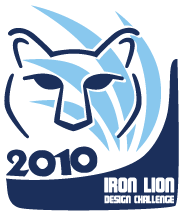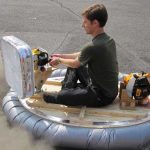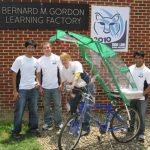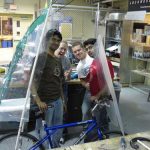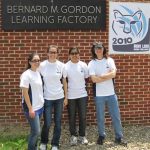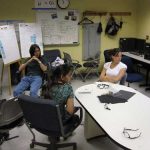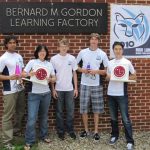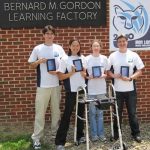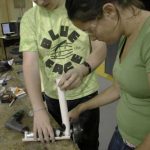June 21-25, 2010
University Park, PA
In the third year of the challenge, 19 students from 4 universities across the U.S. came together to work on a variety of design projects. The students, from various backgrounds and levels of experience, divided into five teams to work on a specific challenge.
Team 1: Personal hovercraft
The objective of this project was to design and fabricate a 1-rider hovercraft suitable for use as a personal transportation vehicle. In the final prototype, a leaf-blower inflated the skirt to create the air cushion, and a fan provided the vehicle with the required horizontal thrust.
Team 2: Bicycle shell
Project Grasshopper was aimed at designing a light-weight and aerodynamic shell for the weather-proofing of bicycles. The final design, which was standardized for use on any road bicycle, comprised of an easily attachable set of struts that supported weather-proof fabric. The fabric was perforated at certain location to reduce wind resistant from the shell.
Team 3: Improved 3D glasses
The goal of this LG-sponsored project was to propose a new 3D glass design that would be aesthetic and comfortable for the user. To this end, the team fabricated prototypes of their candidate designs and conducted a sample survey to identify the most suitable shape and weight distribution for 3D glasses.
Team 4: LG’s next-generation audio experience
The goal of this LG-sponsored project was to propose a new 3D glass design that would be aesthetic and comfortable for the user. To this end, the team fabricated prototypes of their candidate designs and conducted a sample survey to identify the most suitable shape and weight distribution for 3D glasses.
Team 5: Self-propelled walker
This project was aimed at developing a safer, more comfortable, and easier-to-use walker. The resulting prototype was designed to move and turn based on the pressure applied by the user on a set of strategically-placed feedback paddles. An additional improvement over existing walkers was this product’s capability of safeguarding the user from accidents due to overbalancing.
Judges, faculty, and industry collaborators
Each team was judged by a panel of faculty and industry collaborators. First place went to the self-propelled walker. The Challenge would not have been possible without the efforts of Penn State faculty, including Prof. Matt Parkinson, Prof. Mary Frecker, Prof. John Lamancusa, and Prof. Tim Simpson.
Funding for the Iron Lion Design Challenge came from the School of Engineering Design, Technology, and Professional Programs at Penn State; the Penn State College of Engineering; and the National Science Foundation (award #0729386).
